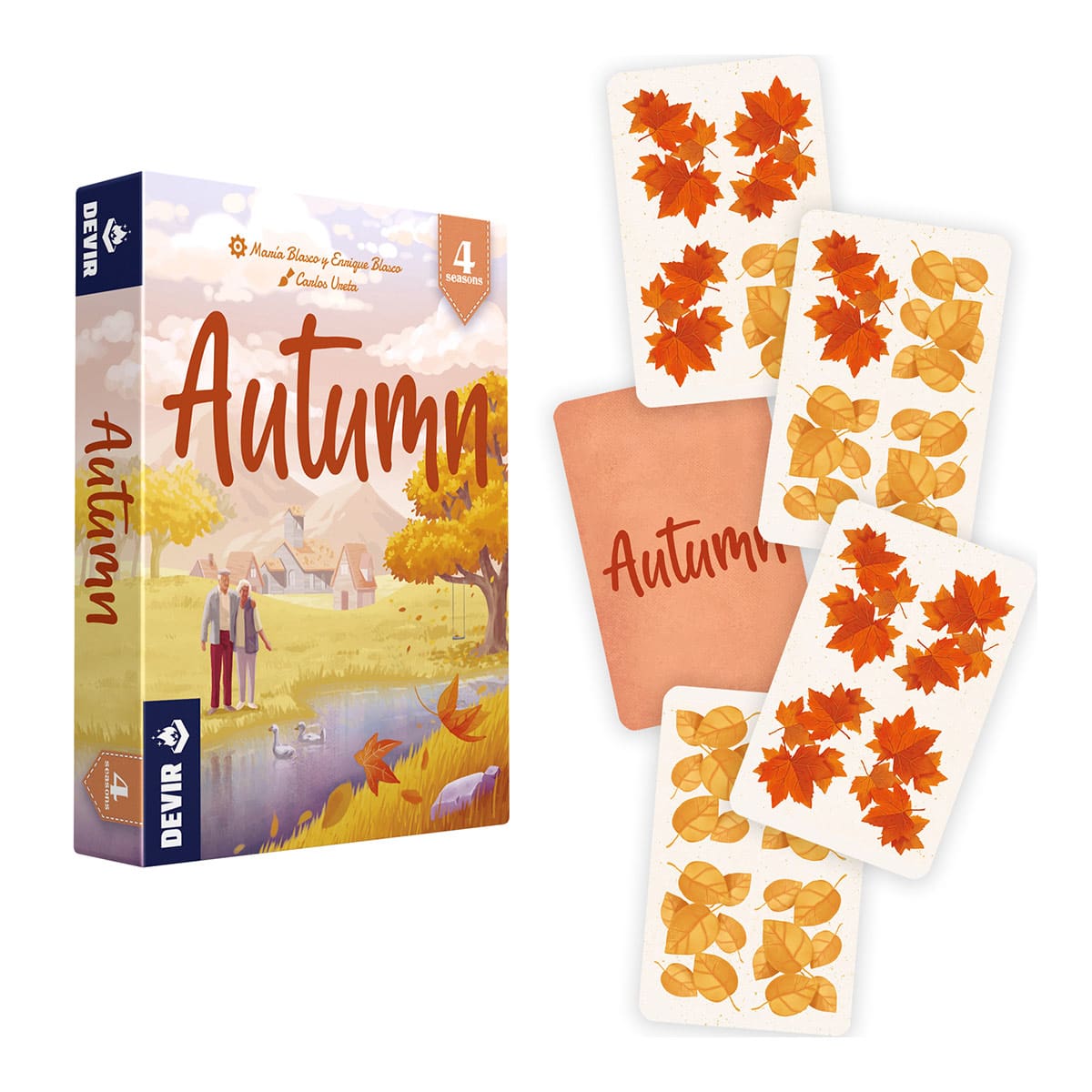Description
Take a card, play it on top of another card on the table, cover one or two leaf spaces, and try to get the largest area of connected leaves of your color. That’s how easy it is to play Autumn! Collecting leaves from the garden has never been so fun.
Autumn arrives and the landscape turns orange and ochre. Little by little the trees are losing their leaves, which fall to the ground forming carpets of color. You and your companion could collect the leaves from the garden, but first you think of something more fun: you will choose a type of leaf and after a few movements with the rake, the winner will be whoever is able to create the largest area with his group. Shall we start?
Designed by María Blasco and Enrique Blasco (better known as Brote de juegos) and illustrated by Carlos Ureta, Autumn is a game from the 4 seasons saga that joins the Devir pocket collection. If you already know Winter, a title by the same authors and which is also part of the saga, this game will be very familiar to you. With only 18 cards that show four groups of leaves of two different colors, Autumn allows quick games for 1 or 2 players, for ages 8 and up.
If you are too lazy to read and learn rules, you will not suffer with this game since you must remember very few rules. To begin, shuffle all the cards and place them forming a deck with the leaves hidden. Reveal the first card and place it on the table. The starting player (chosen at random) reveals another card and plays it on top of the first. The second player, before starting the turn, chooses the color of leaves each player will play with: red or yellow. After this decision, the same player reveals a new card, plays it and passes the turn. The game continues normally with both players alternating turns until the deck of cards is exhausted.
The most important rule to remember is that the cards are always played on top of the others on the table, in the same sense: it is possible to rotate it 180 degrees, but not 90. When placing the card, one or two spaces of leaves must be covered. The overlapping spaces can be of any color, they do not have to match.
Once all the cards have been placed, whoever has the largest area of connected leaf spaces of their color will win the game. Leaf spaces are only considered connected if they are orthogonally adjacent; that is, in contact on the sides, not the corners (diagonal spaces are not considered connected). Anyway, the winner still can’t celebrate the victory! Autumn is designed to play three-round games. After finishing the third, add up and compare the number of spaces each player gets to see who the winner is.
On the other hand, the solitaire mode offers us three different challenges: Garden, Balance and Two. In this mode, the game is played with both colors at the same time, also trying to create areas with spaces of leaves of the same color. Depending on the challenge chosen, we will score in one way or another. In the Garden challenge, at the end, the three areas that contain the most leaves are chosen (regardless of their color) and the number of spaces in each one is counted. The score for that game is the smallest of these three numbers. In the Balance challenge, you must get three areas, with the same number of spaces in each one. And finally, in Challenge Two, you will try to get only two areas, with no unconnected colored spaces outside of either of those two areas.
Autumn is the perfect companion for any trip. With very few components, it offers a very entertaining challenge both to play as a couple and to play alone. The pocket collection is also characterized by its low cost, within reach of all budgets. Let yourself be caught up in the colors of autumn and start playing with the leaves!
1 – 3 Players
Ages 8+
10 – 20 Minutes
















